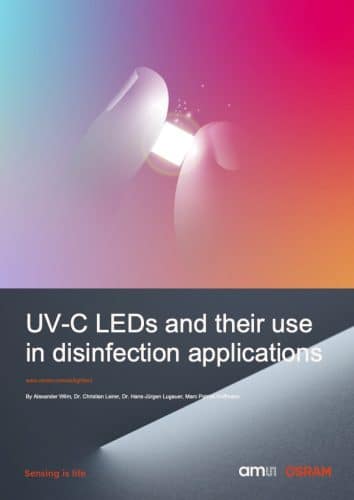UV-C radiation for disinfection applications is used for decades. The major light source in most of these applications is the mercury containing UV-C low-pressure discharge lamp. Compared to this mature technology the UV-C LED is still new and in the introduction phase. LEDs enable new applications which cannot or have not been addressed by conventional lamps before. The radiant power, efficiency and price performance of today’s UV-C LEDs show a significant gap to the conventional lamp and a direct replacement of the current technology seems to be very challenging. In this paper we are trying to estimate the point of time by when UV-C LEDs are able to replace conventional UV-C lamps in different applications by performing a total cost of ownership calculation of the UV-C source at several time points in the future based on roadmaps for different performance parameters and considerations of the respective application efficiencies.

A comparison of the applications upper air treatment, secondary air treatment, batten fixture surface treatment and municipal water treatment shows that in some applications a lamp replacement by LED is already realistic today. The significant difference of the application efficiency between LED and lamp-based systems lead to an earlier possible adoption of the LED technology than expected from a direct comparison of the performance parameters of the sources itself.






